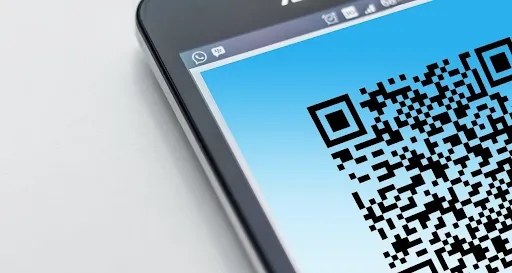Have you ever seen a square barcode on a poster, menu, or product and wondered what it is? That’s a QR code, a powerful marketing tool that can help you engage with your customers and track their behavior. In this guide, we’ll explain what QR codes are, how they work, why people create QR code from link, and the reason they’re so popular in 2023.
Table of Contents
What is it?
A QR code, or a Quick Response code, is a two-dimensional barcode that can store data. Depending on their design and functionality, QR codes can be categorized into two types:
- static;
- dynamic.
Here is what lies under each type:
Static
This is incapable of altering the data it contains, which implies that any mistakes in the information necessitate creating a new code. Nevertheless, fixed QR codes have an indefinite lifespan, and they can be retained for as long as necessary. They prove to be particularly useful for safeguarding sensitive data such as passwords, identification numbers, or access codes.
Dynamic
Dynamic QR codes, on the other hand, offer the flexibility to modify their content whenever required, as the data is not embedded in the code itself. These codes are capable of directing users to specific web pages or URLs, such as restaurant menus. This feature is particularly popular among eateries that utilize these codes to display their menus to customers.
A significant benefit of dynamic QR codes is that they allow you to collect scanning metrics such as:
- location;
- time;
- device customers used to scan the code.
The storage of data in QR codes is based on a matrix of squares and dots, which bears resemblance to the conventional barcodes. Whenever a user employs their smartphone camera to scan the code, the information will immediately manifest on their screen. Notably, recent software enhancements on mobile operating systems, including iOS and Android, have enabled the direct scanning of QR codes via a device’s camera.
Brief history
Back in the 1990s, working with barcodes was a cumbersome task, as the machines could only read a maximum of 20 numbers at a time. To convey the information inside the boxes, workers had to scan a considerable number of them, making the process time-consuming.
However, a Japanese engineer named Masahiro Hara, who was working with barcode reading machines, took it upon himself to solve this issue. He developed a two-dimensional box that had the capacity to store a greater amount of data.
It’s worth noting that the primary use of this technology was to equip vehicles with a tracking system.
When did we start using QR codes for marketing purposes?
Well, the popularity of Quick Response codes began to rise with the emergence of smartphones. However, early in 2011, most users needed to download specific applications to scan them, so their potential was not fully realized.
It wasn’t until 2017 when Apple introduced the scanning function within its camera, that marketers began to see the potential of QR codes. They acted quickly to take advantage of this new modality, but the hype died down soon after.
The next mass adoption wave took place with the arrival of COVID-19. QR codes regained their relevance. With the prohibition of contact between people, businesses began using QR codes as a touchless communication method. In particular, the food and hotel industries started implementing QR codes to showcase their options to customers, and this modality has persisted to this day.
Current situation
According to data from Statista, the use of QR codes increased from 9 million in 2018 to 11 million in 2020, mainly due to the pandemic. Marketers also saw this as a golden opportunity to use QR codes as a communication channel that could manage both online and offline channels.
Many companies continue to use these codes today, and Millennials have embraced them as an excellent way to get provided info quickly and easily.
















